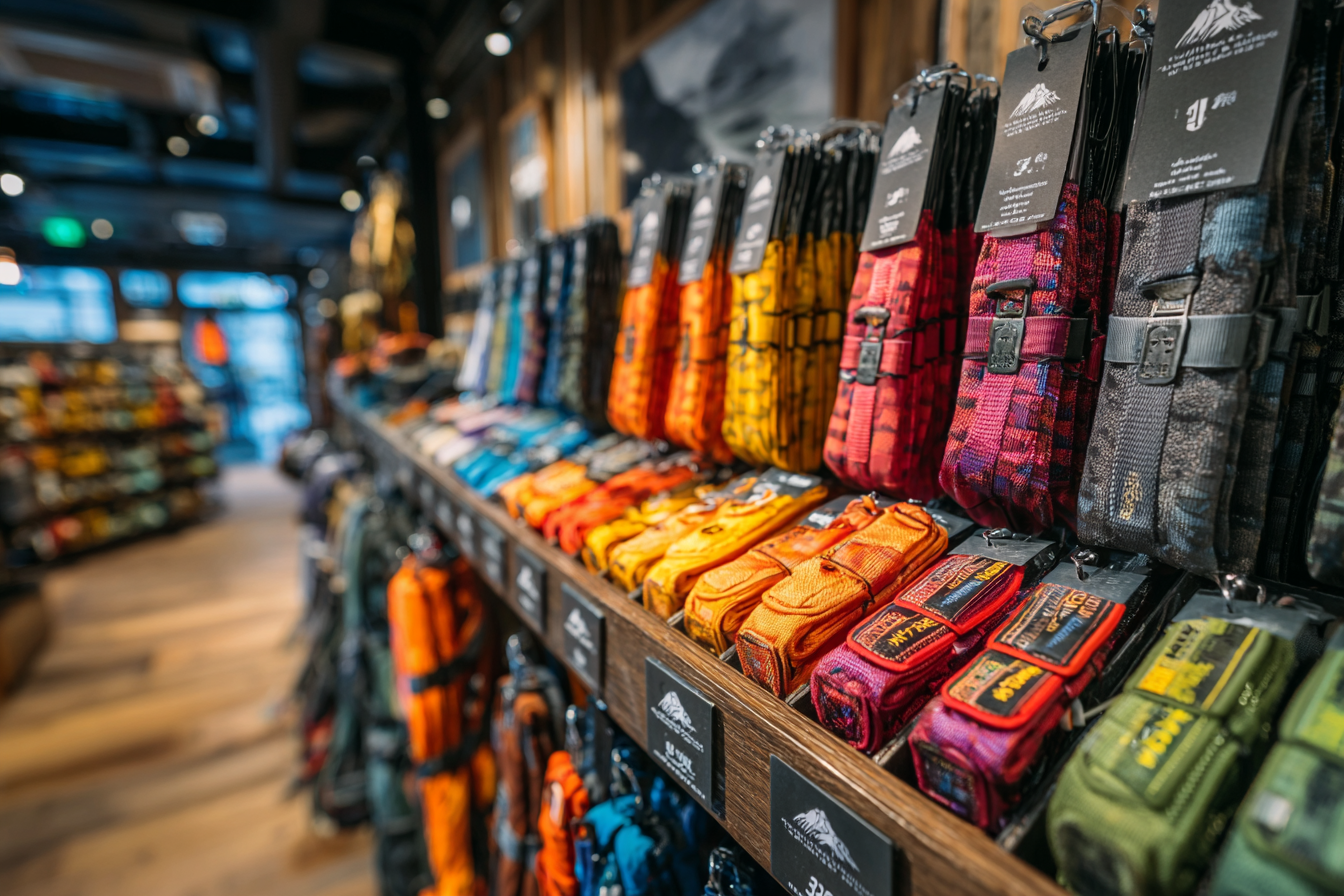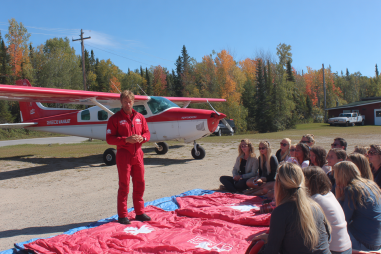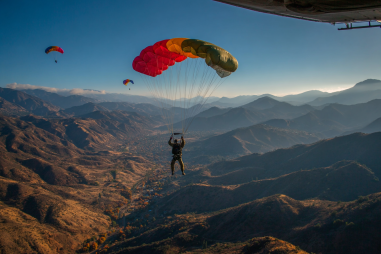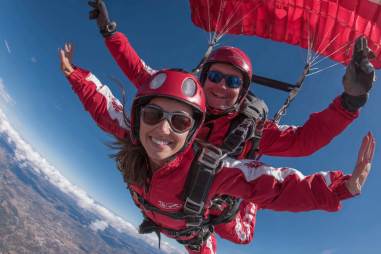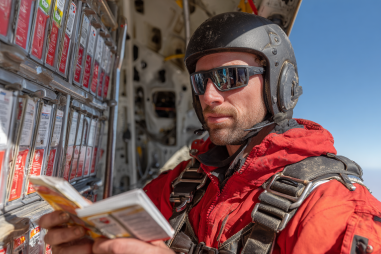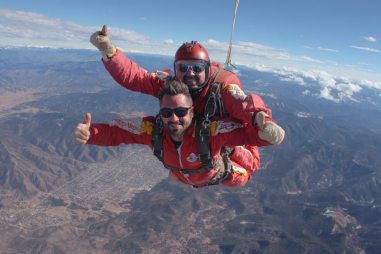Jumping out of an airplane is an exhilarating experience, but before you take the plunge, having the right skydiving gear is essential. While the thrill comes first, safety and comfort are paramount, which makes choosing the right equipment important. However, the price range for skydiving gear can vary widely, making budgeting a bit tricky for new jumpers and experienced skydivers alike. This guide will break down the costs associated with skydiving gear, compare different tiers of equipment, and offer tips on getting the best value without compromising on safety or quality.
Breakdown of Typical Costs for Key Skydiving Gear
Skydiving gear has many components, each with its own cost, and understanding these can help you piece together your overall budget.
- Main Canopy: This is the parachute you deploy for descent. Prices generally range from $2,000 to $4,000 depending on the size and brand.
- Reserve Canopy: The backup parachute, which is legally required. It typically costs between $1,500 and $3,000.
- Container and Harness System: This holds the canopies and straps you into the gear, costing anywhere from $2,000 to $5,000 for high-quality units.
- Automatic Activation Device (AAD): A safety device that deploys your reserve canopy if you haven’t already. These units cost around $1,200 to $2,000.
- Helmet: Ranges from $50 to over $500, depending on features and materials.
- Altimeter: Essential for tracking altitude, costs between $300 and $700 for digital versions.
- Jumpsuit: Roughly $150 to $500 based on customization and durability.
- Gloves and Goggles: Generally budget $30 to $100 for each.
All told, new gear for a complete skydiving setup often ranges from $7,000 to upwards of $12,000. It’s a significant investment, but one where the value lies not just in the gear’s durability but in your safety and performance.
Comparing Entry-Level vs. Mid-Range Equipment
If you’re a beginner or not ready to commit to top-tier gear, entry-level equipment can be a smart starting point. These options are functional and typically cost less but might lack some advanced features or lighter materials present in mid-range models.
Entry-Level Gear:
- Offers basic safety features that meet standard certification requirements
- Made from slightly heavier materials, which might add bulk
- Generally less customizable
- Costs tend to be toward the lower end of the price spectrum – roughly $5,000 to $7,000 for a complete setup
Mid-Range Gear:
- Includes more advanced canopy options for better performance and control
- Uses lighter, more durable materials to increase comfort and ease of packing
- More customization options for fit and style
- Typically priced between $7,000 and $10,000, offering an excellent balance of cost, safety, and features
Choosing between entry-level and mid-range depends on how serious you are about skydiving, how often you jump, and your budget. Many who plan to make skydiving a long-term passion find mid-range gear to be a sensible investment.
Premium Gear Features and Price Justification
Premium skydiving gear is designed for experienced jumpers who demand the best in safety, weight, and performance. While these units come with a hefty price tag, often exceeding $12,000, the additional features often justify the cost.
- Ultra-lightweight Materials: Carbon fiber and other composites reduce pack weight significantly.
- Enhanced Aerodynamics: Canopies that offer superior maneuverability and smooth openings.
- Custom Fitting: Tailored harness systems improve comfort and reduce fatigue.
- Advanced Safety Features: Integration with cutting-edge AADs and container technologies.
- Longer Lifespan: Premium gear often lasts longer due to superior materials and construction, potentially offsetting initial expenses over time.
For those serious about competition skydiving or frequent jumping, investing in premium gear is often worth it, but it’s important to weigh these advantages against your jumping frequency and budget.
New Gear Versus Used Gear Cost Analysis
Used gear is a popular option for many skydivers looking to lower upfront costs. However, buying used equipment comes with some considerations.
- Cost Savings: Used skydiving gear can be 30-50% cheaper than new, sometimes even more.
- Safety Checks: Proper inspection by a qualified rigger is critical to ensure all components meet safety standards.
- Wear and Tear: Parachutes degrade over time with UV exposure and packing cycles, so knowing the age and history is vital.
- Limited Warranty: Used items usually come without any manufacturer warranty.
- Potential for Upgrades: Sometimes used gear can be modified or upgraded to improve performance.
Overall, buying used can be a cost-effective way to enter the sport, but vigilance about equipment condition is essential. Always have used gear checked and repacked by a certified professional before your first jump.
Tips for Balancing Cost with Safety and Quality
While it’s tempting to save money wherever possible, when it comes to skydiving gear, safety and quality should never be compromised. Here are some tips to balance cost and reliability:
- Prioritize the Container and Canopies: These form the core safety elements and should meet recognized certifications.
- Invest in a Good AAD: The AAD is your last line of defense; a reliable device is non-negotiable.
- Shop Around: Look for sales, clearances, and reputable second-hand deals.
- Consult Experts: Talk with instructors, riggers, and experienced jumpers for recommendations tailored to your needs.
- Consider Long-Term Costs: Cheaper initial gear might mean higher maintenance or earlier replacement down the line.
Accessories and Their Impact on Total Budget
Beyond the primary skydiving gear, a host of accessories can add to your overall costs but also enhance your experience and safety.
- Helmet Upgrades: From basic foam helmets to aerodynamic designs with visors, the range varies significantly in price.
- Specialty Altimeters: Wrist-mounted, audible, or even helmet-mounted altimeters add convenience at different costs.
- Equipment Bags: Quality bags designed to carry your rig safely can run from $50 to $200.
- Freeze Protection: Thermal suits or gloves for colder jumps.
- GoPro Mounts and Cameras: Many jumpers like to document their flights, but these add to your budget.
While accessories increase financial outlay, thoughtfully selected ones can improve comfort and safety. Prioritize those that align with your specific jumping style and weather conditions.
Where to Save and Where to Invest
Smart budgeting involves knowing where cutting costs makes sense and where spending more pays off.
Save on:
- Jumpsuits and basic accessories – these can be upgraded later.
- Used gear that has been professionally inspected.
- Non-essential items such as multiple camera gear or decorative elements.
Invest in:
- Your container and harness system – comfort and safety are crucial here.
- The main and reserve canopies with good performance and durability.
- Reliable, certified AAD devices and altimeters.
- Proper training and maintenance – gear upkeep extends the life and reliability of your equipment.
Financing and Rental Options Overview
If the upfront cost of buying new gear is daunting, consider financing or renting options.
- Financing: Many gear vendors and skydiving centers offer payment plans or financing to spread the cost over months or years. This can make higher-end gear more attainable.
- Rentals: Renting gear is an excellent way to try different equipment types before purchasing and is often available at skydiving drop zones. Rental costs vary but usually range from $50 to $150 per jump.
- Lease-to-Own Programs: Some suppliers offer lease arrangements where rental fees contribute toward gear ownership.
Leasing or renting keeps you jumping without the commitment, allowing you to invest gradually based on your experience level and future plans.
Making Smart Financial Decisions for Your Skydiving Gear
Purchasing skydiving gear is a significant milestone in a jumper’s journey. Navigating the diverse options can be overwhelming, but by understanding typical costs, evaluating your needs honestly, and considering both new and used equipment, you can find quality that fits your budget. Prioritize safety-critical components, consult knowledgeable sources, and explore financing or rental options if necessary.
With thoughtful planning, the right gear that provides both safety and performance without breaking the bank is well within reach, allowing you to focus on enjoying every moment of your skydiving adventure.

